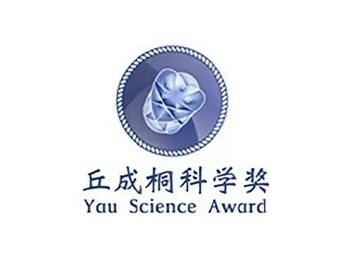Top 5 Colleges With The Most Medals at the 2024 Paris Olympics
On August 11, 2024, the 33rd Summer Olympics came to a successful conclusion at the Stade de France in Paris, France!
In this Olympics, the US team ranked first with a total of 126 medals (40 gold, 44 silver, and 42 bronze). The Chinese team won 40 gold, 27 silver, and 24 bronze. The number of gold medals tied with the United States, and the total number of medals ranked second, creating the best performance of the Chinese sports delegation in participating in the Olympics abroad! Following closely behind are Japan (20 gold, 12 silver, and 13 bronze), Australia (18 gold, 19 silver, and 16 silver), and the host France team (16 gold, 26 silver, and 22 gold).

As the world's number one sports power, the United States' comprehensive sports strength comes from the university training system and the "bottom-up" market competition mechanism.
Which American Colleges performed best in the Paris Olympics?
Fifth place: Harvard University

Harvard athletes won 13 medals (8 gold, 1 silver, 4 bronze) in this Olympics, breaking the university's 128-year Olympic record. A total of 18 athletes with Harvard backgrounds participated in the Olympics, including 12 athletes in fencing (7) and track and field (5). Compared with the previous two Summer Olympics, Harvard's performance in Paris can be said to be a leap forward. The school's athletes only won 3 medals in the Tokyo Olympics three years ago and did not win any medals in the Rio Olympics in 2016.
Fourth place: University of Virginia

University of Virginia's Olympic athletes brought back 14 medals from Paris, 12 of which were won by the United States. Eleven of these 14 Olympic medals came from swimming competitions. Swimmer Rechen Walsh won 4 medals (2 gold and 2 silver). She won the women's 400m relay and the men's and women's 400m finals for the United States and broke the world record; Kate Douglas also won 4 gold medals (2 gold and 2 silver). It is worth mentioning that the US women's swimming team is coached by Todd Desorbo of the University of Virginia. In swimming, a traditional American advantage, the US women's team performs far better than the men's team. The Washington Post said that American female athletes "dominated the entire swimming event."
Third place: University of Southern California

USC Olympic athletes performed well in the Paris Olympics, winning a total of 15 medals (7 gold, 2 silver, and 6 bronze).
The school's Olympic journey can be traced back to 1904, when Emily Blackreese, a student athlete at the school, went to St. Louis, USA, and won a bronze medal in the 800-meter race, becoming the first USC Olympic athlete.
In 1912, Fred Kelly, a 16-year-old freshman at USC, won the 110-meter high hurdles gold medal in Stockholm. Since that Olympics, USC has won at least one gold medal in every Olympics, including the Moscow Olympics boycotted by the United States, where the school's swimmer Mitchell Ford represented Australia in the 800-meter freestyle and won the gold medal.
USC says it has produced more Olympians, medalists, and gold medalists than any other U.S. university.
Overall, 776 USC athletes have represented 65 countries in 30 sports at the Summer or Winter Olympics, including traditional USC strengths like swimming and track and field, as well as less common sports on campus like handball, canoeing, and bobsledding. They have won a total of 153 gold medals, 96 silver medals, and 77 bronze medals.
Second place: University of California, Berkeley

59 athletes with UC Berkeley backgrounds competed in the Paris Olympics, with 18 of them winning 23 medals, including five gold medals, 10 silver medals, and eight bronze medals. Fourteen of these medals were won by American athletes, and the other nine went to Berkeley alumni from five countries.
Twenty of the 23 medals came from water sports such as swimming, water polo, or rowing. Camryn Rogers won the lone individual gold for Berkeley, taking the women’s shot put gold in Paris after winning last year’s world championships.
First Place: Stanford University

Stanford concluded the 2024 Paris Olympic Games with a school-record 39 medals, shattering its previous best while cementing its reputation on the world’s biggest stage as the nation’s top collegiate program.
59 athletes with Stanford backgrounds represented 14 countries and regions in 20 major sports in this Olympics, which also broke the school’s history, including 14 current and 44 former student-athletes.
Their 39 medals (12 gold, 14 silver and 13 bronze) also far exceeded Stanford’s previous record set in Rio (27). In the past five Summer Olympics, Stanford athletes have won a total of 128 medals.
No university in the world has ever won 39 or more medals in the same Olympics. If it were a country, Stanford would be tied with Canada for 11th place in the medal table.
Stanford also has an unshakable position in the US Olympic team, with 37 athletes selected for the national team and winning 36 medals for the United States. In three consecutive Olympic Games, it has become the university in the world that has contributed the most Olympic athletes to its national team.
Looking back at Olympic history, 196 athletes with Stanford backgrounds have won a total of 335 Olympic medals (162 gold, 93 silver, and 83 bronze). For more than a hundred years (since 1912), athletes from the school have won at least one medal in the Olympic Games in which the United States has participated.
Among the 36 school team sports, Stanford athletes won medals in 13 of them: synchronized swimming, women's basketball, women's fencing, men's gymnastics, sailing, men's rowing, women's soccer, women's swimming, and diving, men's track and field, men's volleyball, women's volleyball, men's water polo, and women's water polo.
In this Olympics, Stanford women's swimming and diving athletes won 17 medals, and Katie Ledecky won 4 medals (2 gold, 1 silver, 1 bronze), becoming the most medal-winning female Olympic athlete in the history of the United States. Ledecky also became the only two swimmers, along with the famous swimmer Phelps, to win medals in the same event in four consecutive Olympic Games. In her career, Ledecky won 14 Olympic medals, including 9 gold medals, ranking first in the gold medal list among all female Olympic athletes.
Among the student-athletes at Stanford University, Tori Husk is the only athlete who has participated in the Olympics twice. She won a total of 5 medals (3 gold and 2 silver), and her performance was impressive; Reagan Smith also contributed 5 medals (2 gold and 3 silver).
Stanford’s team events also performed impressively, with 11 student-athletes (current or former) winning medals for their respective countries in women’s basketball (bronze), women’s soccer (gold), men’s volleyball (bronze), women’s volleyball (silver), men’s water polo (bronze), and women’s water polo (silver). The school’s athletes also contributed to medals in synchronized swimming (silver) and men’s gymnastics (bronze) team events.
Meanwhile, 19 Stanford athletes won their first Olympic medals. Perhaps the most notable was track and field athlete Grant Fisher, who became the first American male distance runner to medal in both the 5,000 and 10,000 meters.
In addition to the 59 regular competitors, five Stanford athletes were selected as alternates, one national team head coach, and three national team assistant coaches. In addition, Cameron Brink (3x3 women’s basketball), Katarina Macario (women’s soccer), and Ali Riley (women’s soccer) withdrew due to injuries after being selected for their respective teams.
Nayel Nassar, son-in-law of former world's richest man Bill Gates, withdrew from the Olympic equestrian competition due to an injury to his car.
Stanford also performs well in the American college sports league. The school has 136 (71 men's teams and 65 women's teams) NCAA (National Collegiate Athletic Association) team championships and 167 national championships, dominating the United States in terms of the number of championships. In the past 48 seasons (since the 1976-77 season), Stanford has won at least one NCAA team championship every year.
Can sports help you get into the Ivy League?
Many parents wonder, with so many top students from prestigious schools winning Olympic medals, is applying to Ivy League schools through excellent athletic performance a shortcut? From the data, Athletes are more likely to be accepted into Ivy League schools than regular students.

According to a research report from Harvard University, the admission rate of athletes (specifically sports students) who received the highest or second-highest academic rating on Harvard's internal admissions evaluation form was 83%. In contrast, the admission rate of non-athlete students was significantly lower, at only 16%.
Statistics show that among the freshmen of the 2022 Ivy League schools, the proportion of students with sports expertise at Dartmouth and Princeton has climbed to 20%. The "American College Admissions Consideration Criteria" released by the Princeton Review lists 13 evaluation points, covering high school background, course challenge, grade ranking, GPA, etc. Among them, the contribution of sports activities is particularly prominent, occupying a scoring range of 8 to 40 points.
Nevertheless, it is not easy to take the path of sports specialty, nor is it suitable for all students. It is not easy to cultivate a sports specialty student who meets the standards of Ivy League schools. Students who want to successfully apply to Ivy League schools as sports specialty students must meet the following characteristics:
1. Good sports and good academic performance
Students need to invest a lot of time in training and competition preparation, and parents also need to accompany them to prepare for domestic and international competitions. At the same time, they must maintain good academic performance.
Although the top American universities are tolerant of sports students, students still need to pay attention to GPA and standardized tests. Take Stanford student Gu Ailing as an example. She not only won gold and silver medals in domestic and international competitions but also became a world champion when she applied. She also has outstanding academic achievements and a nearly full score on the SAT.
2. Student-athletes must have world-class awards to apply for Ivy League schools
Julian, an American strategic expert, deeply analyzed the path of "sports specialty to enter Ivy League schools", pointing out that huge investment is indispensable, but without excellent athletic ability, even if a lot of money is invested, sports specialty will have limited help in application.
Julian emphasized that only students who have the potential to be professional athletes or have won world championships can stand out in the application through sports expertise. For most students, it is difficult to realize the dream of Ivy League schools through this path if they are not at the top of sports.
3. The economic cost of applying to Ivy League schools with sports is high
In terms of cost, traditional sports are difficult to show advantages. Many parents turn to niche sports, such as golf, ice hockey, and equestrianism, but the cost is high and cannot be easily afforded by the middle class.
According to a survey by "Money" magazine, American parents' sports investment mainly covers registration, equipment, travel, and course fees. Ice hockey, skiing, and hockey are firmly at the top of the consumption list, with an average monthly cost of about US$2,000 to US$2,500.

Therefore, when weighing the priority between sports expertise and academic performance, families must calmly analyze and make rational decisions to ensure that their children's future development is more stable and diversified.
Finally, Embark would like to remind all parents that sports can be a new path to "take a shortcut" to enter Ivy League schools, but it is not a shortcut that is smooth sailing. Students need to pay attention to time planning, project selection, and the balance between extracurricular activities and academic studies, all of which require a lot of time and energy.
For students who want to apply to top schools, it is of utmost importance to fully enrich their academic background and improve their professional strength! So how do students with different academic backgrounds plan their path to higher education? What academic activities do Ivy League schools value, and what kind of students do they prefer? Come and consult Embark !
Embark was founded in 2016. It is an educational institution focusing on customized scientific research training for teenagers. The core team members are all master's and doctoral graduates from prestigious American universities. Since its establishment, it has exclusively signed more than 3,000 mentors from the Ivy League, MIT, California Institute of Technology, Johns Hopkins JHU, Carnegie Mellon CMU, Top 30 U.S. Universities, National Key Laboratories, UK G5, Max Planck Institute, ETH Zurich, National University of Singapore, Nanyang Technological University, and other world-renowned universities. It has guided students to win nearly a thousand awards in major global scientific research competitions through customized scientific research training and helped them successfully enter world-renowned universities such as Harvard, Stanford, Princeton, Oxford, and Cambridge. If you are interested in scientific research, you can learn about the Embark Exploration Program, where you will have one-on-one academic projects with expert mentors from world-famous universities. If you are interested in Prestigious STEM Competitions, you will receive guidance from Embark’s mentors with strong academic backgrounds, who will lead you to achieve success in international competitions and get a stepping stone to enter Ivy League schools.



